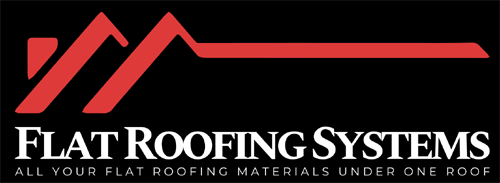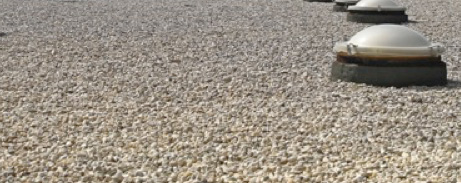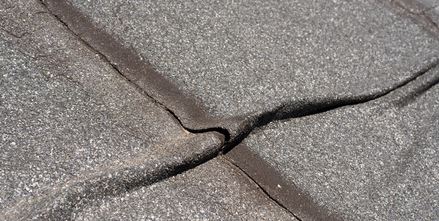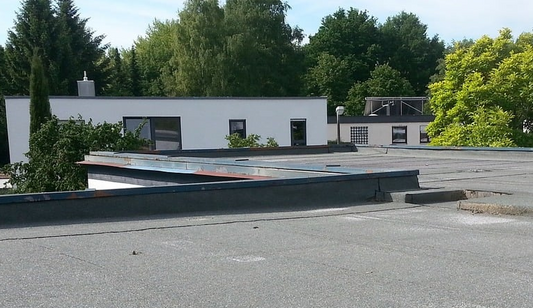Polyurethane versions of liquid applied waterproofing membranes are gaining in popularity. But what exactly is it?
Key Points
Polyurethane liquid waterproofing systems are a reliable solution for protecting surfaces from water & moisture. Their resistance to extreme temperatures makes them suitable for various environments.
Since they can be applied cold, using a roller or brush, the process is relatively straightforward. Notably, some polyurethane systems have earned a BBA certification, which guarantees their durability for over 25 years. This is significant because it ensures that the surface remains protected for an extended period, reducing the need for frequent repairs or replacements.
One of the key benefits of polyurethane systems is their ability to adhere well to different substrates, including wood, metal, and concrete. This versatility makes them a practical choice for various projects, whether it's a new build or a refurbishment.
Additionally, they can be applied to uneven surfaces, which is particularly useful in situations where the substrate is not perfectly smooth. From a cost perspective, polyurethane systems are a cost-effective option, offering streamlined usability and minimal maintenance costs. This is especially important for projects where budget is a concern, as it allows for effective waterproofing without incurring significant expenses.
What Is Polyurethane Waterproofing
Polyurethane waterproofing provides effective protection for surfaces vulnerable to water damage, especially for structures such as flat roofs, walkways, and balconies exposed to harsh weather conditions. This reliability comes from its inherent resistance to extreme temperatures.
When applying polyurethane systems, one advantage is that the liquids can be applied cold using just a roller or brush. These liquids then cure relatively quickly, usually between 2 to 24 hours, with the duration influenced by the amount of accelerator used.
Upon curing, the resulting surface is quite durable. Enhancing this strength by adding a fiberglass mat can further ensure a high level of protection. Notably, some polyurethane liquids boast certification for longevity of over 25 years.
Specifically, look for the BBA certification. Having such a warranty, individuals can confidently anticipate years of effective protection from water damage, providing reassurance, and lengthening the lifespan of their structures, making this choice appealing for both residential and commercial applications.
Benefits of Liquid Waterproofing
When it comes to protecting structures from water damage, a reliable waterproofing system is crucial.
One of the most significant advantages of polyurethane liquid waterproofing systems is their ability to be applied to uneven surfaces without compromising their performance. This is particularly useful for structures with curved or irregular shapes, which can be challenging to waterproof.
The cost-effectiveness of these systems is another significant benefit. They can be used for both new build and refurbishment projects, making them a versatile solution for different needs.
This flexibility is essential because it allows builders and architects to choose a waterproofing system that meets their specific requirements, whether they're working on a new construction project or renovating an existing building.
Polyurethane liquid waterproofing systems also have excellent adhesion to various substrates, including wood, metal, and concrete. This is important because it ensures a strong bond between the waterproofing system and the substrate, which can withstand harsh weather conditions and extreme temperatures.
This, in turn, helps to prevent water damage and reduces maintenance costs.
Additionally, polyurethane liquid waterproofing systems have a seamless membrane formation, which makes them ideal for areas with high foot traffic.
This is particularly useful for structures like balconies, walkways, and rooftops, where people are likely to walk.
By choosing these systems, builders and architects can ensure that their structures remain protected from water damage for years to come.
The durability of polyurethane liquid waterproofing systems is also a significant advantage.
They're BBA certified for life in excess of 25 years, which gives builders and architects peace of mind and minimizes maintenance costs.
This certification is essential because it provides assurance that the waterproofing system will perform as expected over an extended period.
Types of Polyurethane Systems
Polyurethane liquid waterproofing systems are versatile and come in various types, each with distinct characteristics, applications, and performance levels. Understanding these differences is key to selecting the right system for your project.
Single-component systems, such as Arboflex PU Liquid Waterproofing, are popular due to their ease of application and fast curing times, making them suitable for small to medium-sized projects.These systems can be applied using a roller or brush, simplifying the process and enable fast installation.
In contrast, two-component systems, offer enhanced performance and durability, making them ideal for larger projects.However, they require a mixer to combine the two components, adding an extra step to the application process.
Other types of polyurethane systems include Ecothane roofing systems. Each system boasts unique features, such as excellent adhesion to different substrates or high foot traffic resistance.
Applications and Uses
Flat roofs, walkways, balconies, and car parks are examples of surfaces that benefit from polyurethane liquid waterproofing systems. These systems are commonly used in the construction industry due to their versatility and robust nature.
They're extremely resistant to extreme temperatures and weather conditions, making them ideal for waterproofing surfaces.
Polyurethane liquid waterproofing systems are suitable for various applications, including:
- Residential and commercial flat roofs, providing a seamless and durable waterproof membrane.
This is important because it protects buildings from water damage and reduces maintenance costs.
- Walkways and balconies, offering a safe and slip-resistant surface.
This is crucial for public safety, especially in areas with heavy foot traffic.
- Car parks and industrial areas, withstanding heavy foot and vehicle traffic.
This is essential for maintaining the structural integrity of these areas and preventing damage from water and chemicals.
These systems are also suitable for new build and refurbishment projects, and can be used on uneven surfaces, such as curved or irregular shapes.
Their excellent adhesion to different substrates, including wood, metal, and concrete, ensures that surfaces are fully protected from the elements.
In addition, polyurethane liquid waterproofing systems can be used on a variety of surfaces, including:
- Roofs with complex geometries, such as those with multiple levels or angles.
- Surfaces with existing damage, such as cracks or holes.
- Areas with high foot traffic, such as shopping centers or airports.
Advantages Over Other Coatings
Polyurethane liquid waterproofing systems are the ideal solution for a range of waterproofing applications, and here's why.
They have several benefits, primarily because of their flexible nature, allowing for straightforward application on surfaces that other materials find tricky, like those that are irregular or have awkward angles.
Adhesion to materials is where they particularly stand out; being certified for excellent performance, ensuring robust sealing properties in severe environmental conditions like varying weather.
Some people often cite wood as their number one go-to application and performance; however, due to cost efficiency, there can also be robust attachment onto both concrete as well as steel-based infrastructures as they get some government-grade standards, namely for periods well above and including quarter-century.
Having flexibility over alternative sealers, this variant has the best bargain benefit, primarily saving projects using on-going value overall, more added total ROI also streamlined usability, fewer more additional expensive skills personnel who they include notably maintenance, so common fixes, much labor repairs.
Installation and Maintenance
A polyurethane liquid waterproofing system needs to be installed and maintained properly to work well and last long.
First, prepare the surface by cleaning it thoroughly and fixing any cracks or damage. Then, apply a primer to ensure a strong bond between the surface and the polyurethane liquid.
Regular inspections of the surface for signs of damage or wear and making repairs as needed are part of maintaining a polyurethane liquid waterproofing system.
This maintenance is important because it helps the system last longer, work better, and look good.
The benefits of regular maintenance include a longer lifespan, better performance, and a better appearance.
Regular inspections and prompt repairs can extend the lifespan of a polyurethane liquid waterproofing system, saving money and hassle in the long run.
A well-maintained system will also perform better, providing a stronger and more reliable barrier against water and weather damage.
Additionally, regular maintenance can help keep the system looking its best, with a clean and seamless finish that enhances the appearance of a building.
Rounding Up
Polyurethane Liquid Waterproofing Systems offer numerous benefits, making them a popular choice among builders and architects.
Their versatility and robust nature allow them to withstand extreme weather conditions, ensuring a reliable and long-lasting waterproof surface.




